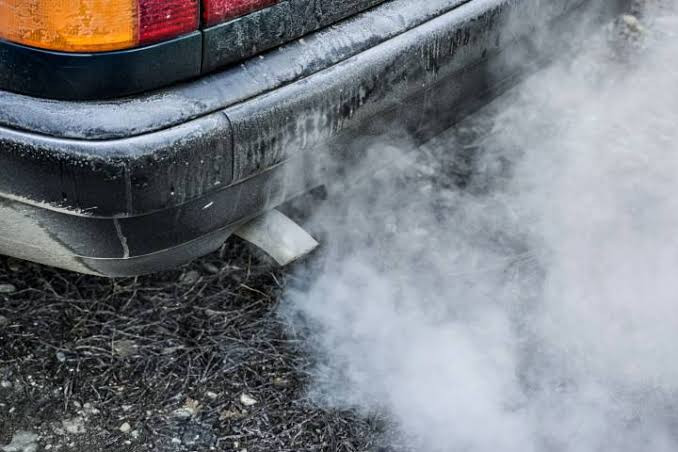According to a recent automotive industry report, over 65% of serious engine failures could have been prevented with early detection and prompt attention to warning signs.
White smoke from your exhaust is one of those critical signals your car is desperately trying to send you.
I've spent two decades elbow-deep in engines, and let me tell you, that innocent-looking plume could be the difference between a simple fix and a devastating repair bill. Knowing what causes white smoke and how to address it might just save your engine and your wallet.
When Is White Smoke Normal?
Not all white smoke signals disaster. When you start your car on a cold morning, those wispy white clouds from your tailpipe are typically just water vapor - a perfectly normal part of the combustion process.
"All engines produce white exhaust on cold startup. That's due to a rich fuel mixture needed to run a cold engine, which produces more water vapor in the exhaust," explains one automotive expert on a popular mechanics forum.
This condensation should disappear within a few minutes as your engine warms up. It's simply the warm exhaust gases mixing with cold air, creating visible vapor just like seeing your breath on a chilly morning. If the smoke dissipates quickly as your engine reaches operating temperature, you're likely in the clear.
When To Worry
But what about when that smoke doesn't go away? This is where my diagnostic instincts kick in. Thick, continuous white smoke that persists after your engine warms up is a red flag that shouldn't be ignored.
The most common cause behind persistent white smoke is coolant entering your combustion chamber. This typically indicates one of several serious issues:
- Blown Head Gasket: The head gasket creates a seal between your engine block and cylinder head. When it fails, coolant leaks into the combustion chambers.
- Cracked Cylinder Head: Excessive heat or engine knocking can crack this crucial component, allowing coolant to seep where it doesn't belong.
- Cracked Engine Block: The most severe diagnosis - cracks in the engine block itself can allow coolant to enter cylinders.
As MotorTrend notes, "In most cases, this is the result of a blown head gasket, but a cracked engine block or cylinder head could also be the cause."
Recognizing A Blown Head Gasket
Besides white smoke, watch for these telltale signs of head gasket failure:
- Sweet-smelling exhaust: That sweet aroma is ethylene glycol from your coolant burning in the combustion chamber.
- Milky oil: Check your dipstick or oil cap. A light brown, milky substance indicates coolant mixing with your oil.
- Overheating engine: A failing head gasket often causes persistent overheating issues.
- Bubbling in the radiator or overflow tank: Combustion gases escaping into your cooling system create telltale bubbling.
- Unexplained coolant loss: If you're constantly topping off coolant with no visible leaks, it might be burning inside your engine.
One of the clearest signs of head gasket failure is "the milky sludge on the underside of the oil filler cap or the dipstick, sometimes referred to as a 'milkshake'," according to Haynes repair manuals.
The Cost of Ignoring White Smoke
I've seen too many customers who ignored early warning signs only to face catastrophic damage later. Continuing to drive with coolant leaking into your combustion chamber can lead to:
- Severe engine damage: Coolant isn't meant to burn in your cylinders and can cause significant damage to pistons, cylinder walls, and valves.
- Hydrolocking: In extreme cases, enough coolant can accumulate in a cylinder to cause hydrolocking, which can bend connecting rods or damage your crankshaft.
- Complete engine failure: The ultimate consequence, a repair that can cost thousands of dollars.
The repair costs vary widely depending on your vehicle. A head gasket repair typically runs between $1,000-$2,000, while more extensive damage requiring engine rebuilding or replacement can exceed $4,000. As one automotive resource states, "A head gasket repair can cost a thousand dollars or more to fix"
Preventing Head Gasket Failure
Prevention is always cheaper than the cure. Here's what I tell all my customers:
- Maintain your cooling system: Regularly check coolant levels and condition. Flush the cooling system according to manufacturer recommendations.
- Address overheating immediately: Never continue driving an overheating engine. Pull over safely and have the vehicle towed if necessary.
- Use the right coolant: Always use manufacturer-recommended coolant types and mixtures.
- Replace the thermostat when needed: A failing thermostat can cause temperature fluctuations that stress your head gasket.
- Keep up with oil changes: Clean oil helps regulate engine temperature and reduces stress on gaskets and seals.
The CRC Industries automotive experts emphasize: "Perform regular oil changes... Keep the cooling system in top condition... Monitor engine temperature" as key ways to prevent a blown head gasket.
That white smoke coming from your exhaust is your vehicle's way of communicating. Learning to distinguish between normal condensation and warning signs of serious issues can save you from expensive repairs.
If you notice persistent white smoke, especially combined with other symptoms like overheating or coolant loss, don't delay. Have your vehicle inspected by a qualified mechanic immediately. The few hundred dollars for diagnostic work could save you thousands in engine repairs.

Comments (0)
Please login to join the discussion
Be the first to comment on this article!
Share your thoughts and start the discussion